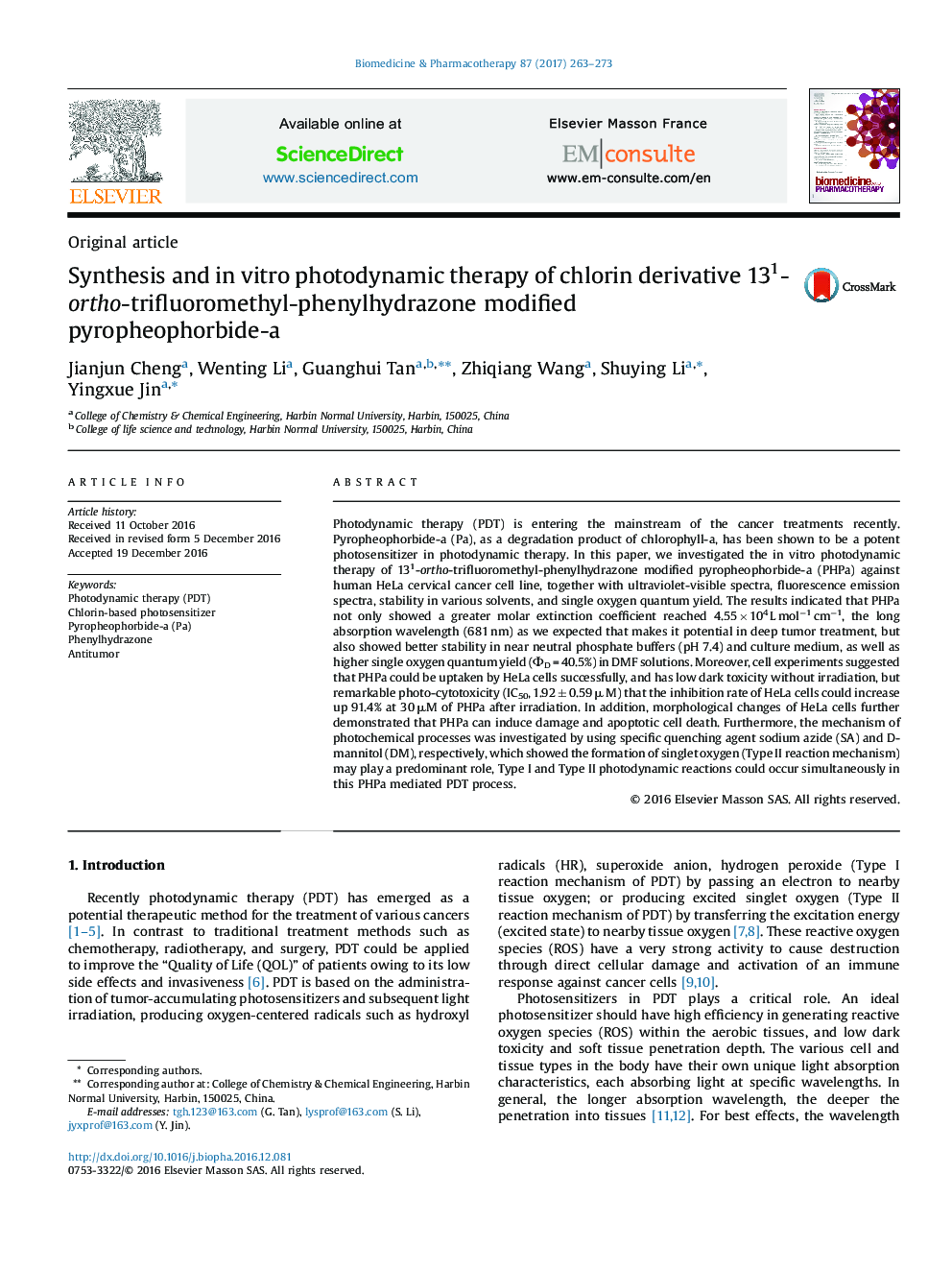| کد مقاله | کد نشریه | سال انتشار | مقاله انگلیسی | نسخه تمام متن |
|---|---|---|---|---|
| 5553446 | 1557955 | 2017 | 11 صفحه PDF | دانلود رایگان |

- Pyropheophorbide-a derivative PHPa was synthesized for PDT with longer absorption wavelength (681Â nm).
- The single oxygen quantum yield of PHPa (ФΠ= 40.5%) was measured by using DPBF as a detector.
- PHPa showed low dark toxicity without irradiation, but remarkable photo-cytotoxicity with an IC50 of 1.92 ± 0.59 μM.
- The morphological variation of cells after PHPa-PDT treatment was studied using AO/EB double fluorescent staining.
- The photochemical processes mechanism of PDT was studied using specific quenching agent sodium azide and D-mannitol.
Photodynamic therapy (PDT) is entering the mainstream of the cancer treatments recently. Pyropheophorbide-a (Pa), as a degradation product of chlorophyll-a, has been shown to be a potent photosensitizer in photodynamic therapy. In this paper, we investigated the in vitro photodynamic therapy of 131-ortho-trifluoromethyl-phenylhydrazone modified pyropheophorbide-a (PHPa) against human HeLa cervical cancer cell line, together with ultraviolet-visible spectra, fluorescence emission spectra, stability in various solvents, and single oxygen quantum yield. The results indicated that PHPa not only showed a greater molar extinction coefficient reached 4.55 Ã 104âL molâ1 cmâ1, the long absorption wavelength (681 nm) as we expected that makes it potential in deep tumor treatment, but also showed better stability in near neutral phosphate buffers (pH 7.4) and culture medium, as well as higher single oxygen quantum yield (ФD = 40.5%) in DMF solutions. Moreover, cell experiments suggested that PHPa could be uptaken by HeLa cells successfully, and has low dark toxicity without irradiation, but remarkable photo-cytotoxicity (IC50, 1.92 ± 0.59 μ M) that the inhibition rate of HeLa cells could increase up 91.4% at 30 μM of PHPa after irradiation. In addition, morphological changes of HeLa cells further demonstrated that PHPa can induce damage and apoptotic cell death. Furthermore, the mechanism of photochemical processes was investigated by using specific quenching agent sodium azide (SA) and D-mannitol (DM), respectively, which showed the formation of singlet oxygen (Type II reaction mechanism) may play a predominant role, Type I and Type II photodynamic reactions could occur simultaneously in this PHPa mediated PDT process.
100
Journal: Biomedicine & Pharmacotherapy - Volume 87, March 2017, Pages 263-273